
IZVESTIYA ATMOSPHERIC AND OCEANIC PHYSICS
Scope & Guideline
Advancing knowledge in atmospheric and oceanic sciences.
Introduction
Aims and Scopes
- Atmospheric Dynamics and Physics:
Research related to the physical processes in the atmosphere, including studies on turbulence, boundary layer dynamics, and atmospheric waves. - Oceanography and Marine Processes:
Investigations into ocean currents, circulation models, and interactions between oceanic and atmospheric systems. - Climate Change and Environmental Studies:
Analysis of climate variability, greenhouse gas emissions, and the effects of anthropogenic activities on climate systems. - Remote Sensing and Satellite Observations:
Utilization of satellite data for monitoring atmospheric and oceanic conditions, including pollutants, temperature variations, and land cover changes. - Hydrology and Meteorology:
Studies focusing on precipitation patterns, hydrological cycles, and their impacts on ecosystems and human activities. - Geophysical and Geological Processes:
Research on the geophysical aspects of the Earth including seismic activity, geological formations, and their relation to atmospheric phenomena.
Trending and Emerging
- Methane Emissions and Greenhouse Gas Dynamics:
There is a notable increase in research focused on methane emissions from reservoirs and other sources, highlighting the importance of understanding greenhouse gas contributions to climate change. - Urban Climate Studies and Anthropogenic Heat Flux:
Research examining urban heat islands, anthropogenic heat effects, and their implications for local climates is gaining traction as urbanization continues to impact atmospheric conditions. - Advanced Remote Sensing Techniques:
The use of advanced satellite technologies and remote sensing methods for monitoring atmospheric and oceanic conditions is on the rise, enabling more precise and comprehensive environmental assessments. - Climate Modeling and Projections:
There is a growing emphasis on the use of climate models, particularly CMIP6 ensemble simulations, to predict future climate scenarios and assess impacts on hydrological and meteorological systems. - Interdisciplinary Approaches to Environmental Monitoring:
Emerging trends indicate an increased integration of various scientific disciplines, including biology, chemistry, and physics, to address complex environmental issues and improve monitoring techniques.
Declining or Waning
- Historical Seismology:
Research focusing on historical seismic events and their impacts is becoming less prominent, possibly due to a shift towards more contemporary and predictive studies. - Polar Meteorology and Arctic Studies:
There appears to be a waning interest in polar meteorology topics, which may be due to the increasing focus on global climate change rather than isolated regional studies. - Geochemical Analysis of Atmospheric Components:
Investigations into the geochemistry of atmospheric constituents, while still relevant, are being overshadowed by more integrated studies combining multiple environmental factors. - Hydroacoustic Studies:
The specific focus on hydroacoustic phenomena related to oceanic studies is decreasing, likely due to the rise of more comprehensive oceanographic modeling approaches. - Historical Climate Data Analysis:
Analysis of historical climate data trends is experiencing a decline as researchers pivot towards modeling future climate scenarios and impacts.
Similar Journals
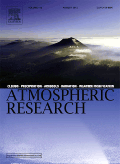
Atmospheric Research
Advancing the Frontiers of Atmospheric ScienceAtmospheric Research is a premier journal published by Elsevier Science Inc, specializing in the field of Atmospheric Science. With a commendable impact factor, it holds a distinguished position in the Scopus rankings, being placed 14th out of 148 journals within its category and achieving a remarkable 90th percentile rank. This journal serves as a vital outlet for rigorous research on atmospheric processes, climate variability, and meteorological phenomena, providing a platform for scientists, researchers, and students to disseminate their findings and contribute to the advancement of knowledge in this critical field. Although it is not an open-access journal, its strong reputation and selective publication criteria ensure that only high-quality and impactful studies are featured. Since its inception in 1986, Atmospheric Research has continuously evolved to meet the dynamic nature of atmospheric studies, making it a fundamental resource for anyone engaged in understanding and addressing atmospheric challenges worldwide.

ATMOSPHERIC CHEMISTRY AND PHYSICS
Transforming atmospheric science through open access research.Atmospheric Chemistry and Physics is a leading open-access journal published by Copernicus Gesellschaft mbH, dedicated to advancing the understanding of atmospheric processes and their interactions. With an ISSN of 1680-7316 and E-ISSN of 1680-7324, this journal has been a pivotal resource in the field since its inception in 1999. Based in Göttingen, Germany, it covers a broad spectrum of atmospheric science, providing a platform for original research and reviews that help drive innovation and inform policy. Notably recognized as Q1 in the Atmospheric Science category for 2023, it ranks #8 out of 148 in its field according to Scopus, reflecting its high-quality and impactful contributions. With a commitment to open access since 2001, the journal aims to facilitate widespread dissemination of knowledge, making it readily available to researchers, professionals, and students globally. By fostering the exchange of ideas and findings, Atmospheric Chemistry and Physics plays a crucial role in addressing the pressing challenges related to climate change, air quality, and atmospheric processes.
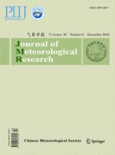
Journal of Meteorological Research
Navigating the Future of Weather Science.The Journal of Meteorological Research, published by SPRINGER HEIDELBERG, stands as a vital resource in the fields of Atmospheric Science and Ocean Engineering, boasting an impressive impact factor that reflects its scholarly significance. With its ISSN 2095-6037 and E-ISSN 2198-0934, the journal offers an open access platform, fostering accessibility and dissemination of cutting-edge research. Established in 2014 and running through to 2024, it is particularly distinguished in 2023 as Q2 in Atmospheric Science and Q1 in Ocean Engineering, underscoring its important contributions to these disciplines, with remarkable rankings in Scopus that place it in the top tiers of both categories. The journal accepts a broad range of research articles, reviews, and innovative methodologies, catering to a diverse audience of researchers, professionals, and students eager to advance their knowledge and expertise in meteorological studies. This makes the Journal of Meteorological Research an essential platform for anyone engaged in understanding and addressing the complex challenges of our changing climate.
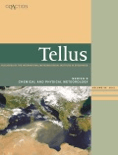
TELLUS SERIES B-CHEMICAL AND PHYSICAL METEOROLOGY
Exploring the intricacies of chemical and physical meteorology.TELLUS SERIES B-CHEMICAL AND PHYSICAL METEOROLOGY, published by Stockholm University Press, is a leading open-access journal dedicated to the advanced study of atmospheric sciences, specializing in the chemical and physical aspects of meteorology. With an ISSN of 1600-0889, this journal has been committed to disseminating high-quality research since its transition to open access in 2012, ensuring that cutting-edge discoveries are freely available to the global research community. The journal's scope encompasses a wide range of topics within meteorology, attracting contributions from both established and emerging researchers in the field. The importance of this journal lies in its ability to bridge gaps in knowledge and foster collaboration among scientists, making it an essential resource for professionals and students alike who seek to deepen their understanding of atmospheric phenomena. For submissions and further information, please refer to the Stockholm University Press website.
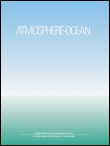
ATMOSPHERE-OCEAN
Advancing Knowledge in Atmospheric and Oceanic InteractionsATMOSPHERE-OCEAN is a premier peer-reviewed journal published by Taylor & Francis Ltd, dedicated to advancing the fields of atmospheric science and oceanography. Since its inception in 1963, this journal has served as a crucial platform for researchers, professionals, and students, facilitating the dissemination of significant findings and innovative methodologies in understanding the complex interactions between the atmosphere and the ocean. With its journal ranking in the Q3 category for Atmospheric Science and Q2 for Oceanography as of 2023, along with its Scopus rankings, ATMOSPHERE-OCEAN maintains its relevance by addressing current topics such as climate change, hydrology, and ocean circulation patterns. For those seeking to contribute to or stay informed about the latest research in these critical fields, ATMOSPHERE-OCEAN is an invaluable resource that combines rigorous scholarship with practical implications for environmental management and policy.
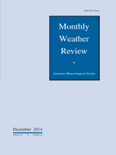
MONTHLY WEATHER REVIEW
Connecting Researchers through Meteorological DiscoveriesMONTHLY WEATHER REVIEW, published by the American Meteorological Society, is a leading journal in the field of atmospheric science, recognized for its rigorous peer-reviewed articles that contribute significantly to the understanding of weather patterns and climate systems. With an impressive Q1 ranking in the 2023 category quartiles and a strong standing (#41 out of 148) in the Earth and Planetary Sciences Scopus rankings, the journal serves as an essential resource for researchers, professionals, and students alike. Although it does not currently offer open access, its comprehensive coverage of meteorological research spanning from 1960 to 2024 makes it invaluable for those seeking to stay at the forefront of developments in weather analysis and prediction. Situated in Boston, Massachusetts, this journal not only showcases pioneering research but also emphasizes the importance of collaborative efforts in the meteorological community, ultimately contributing to advancements in our understanding of atmospheric phenomena.
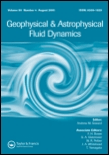
GEOPHYSICAL AND ASTROPHYSICAL FLUID DYNAMICS
Exploring the Dynamics of Our UniverseGEOPHYSICAL AND ASTROPHYSICAL FLUID DYNAMICS, published by Taylor & Francis Ltd, is a pivotal journal that caters to the intersection of fluid dynamics within geophysical and astrophysical contexts. With an ISSN of 0309-1929 and an E-ISSN of 1029-0419, this journal has been a cornerstone of interdisciplinary research since its inception in 1971. It showcases cutting-edge studies in fluid dynamics as applied to various fields including Astronomy, Geophysics, and Computational Mechanics, reflected in its 2023 category rankings of Q2 and Q3 across diverse areas such as Geochemistry and Mechanics of Materials. The journal aims to provide a platform for original research, theoretical advancements, and comprehensive reviews that contribute to the understanding of fluid behavior in natural and extraterrestrial environments. Although currently not open access, it remains influential in its fields, appealing to a dedicated audience of researchers, professionals, and students seeking to deepen their knowledge and foster innovative approaches to complex fluid dynamics problems. Leveraging its robust Scopus rankings, the journal continues to advance scholarly discourse and support the evolving narratives of geophysical and astrophysical sciences.
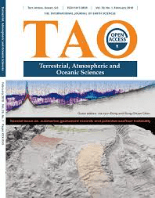
TERRESTRIAL ATMOSPHERIC AND OCEANIC SCIENCES
Bridging Oceans and Atmospheres Through ResearchTERRESTRIAL ATMOSPHERIC AND OCEANIC SCIENCES, published by SpringerNature, is a distinguished peer-reviewed journal that has been an essential platform for innovative research in the fields of atmospheric science, oceanography, and Earth and planetary sciences since its inception. With an Open Access policy established in 1990, the journal ensures wide dissemination of knowledge, allowing researchers, professionals, and students to access cutting-edge findings without restrictions. Based in Switzerland and featuring a comprehensive coverage from 1996 to 2024, the journal currently holds a Q3 ranking across various categories, indicating its growing significance in the scientific community. Although it is positioned within the 39th percentile in Earth and Planetary Sciences, its commitment to fostering high-quality research makes it a valuable resource for advancing understanding of terrestrial environments and their interconnections. Researchers seeking a platform for their work in atmospheric and oceanic sciences will find TERRESTRIAL ATMOSPHERIC AND OCEANIC SCIENCES to be an ideal venue for sharing their insights with a global audience.
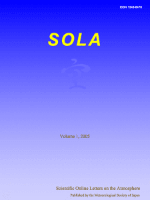
SOLA
Fostering global dialogue in atmospheric phenomena.SOLA is a distinguished journal published by the Meteorological Society of Japan, focusing on cutting-edge research in the field of atmospheric science. Since transitioning to an Open Access model in 2018, SOLA aims to facilitate the dissemination of knowledge and foster collaboration among researchers from around the globe. With a proud history spanning from 2005 to 2024, the journal has earned a reputation for high-quality publications, achieving a Q1 ranking in Atmospheric Science according to the 2023 category quartiles. Although its H-Index is currently not available, SOLA is recognized in Scopus rankings, standing at #82 out of 148 in Earth and Planetary Sciences, demonstrating its impact in the field. With its headquarters in Tokyo, Japan, and an unwavering commitment to advancing scientific understanding, SOLA serves as an essential resource for researchers, professionals, and students dedicated to exploring the complexities of atmospheric phenomena.

Weather and Climate Dynamics
Unraveling the Complexities of Weather and ClimateWeather and Climate Dynamics, an esteemed journal published by COPERNICUS GESELLSCHAFT MBH, focuses on the intricate relationships and processes governing climate and weather patterns, advancing our understanding of atmospheric sciences. Since its launch in 2020, this Open Access journal has rapidly gained recognition, achieving a commendable Q1 status in Atmospheric Science and ranking 39th out of 148 journals in the Earth and Planetary Sciences category, placing it in the 73rd percentile. Based in Germany, the journal aims to provide a platform for innovative research, sharing crucial findings that contribute to tackling global climate challenges. Researchers, professionals, and students alike are encouraged to explore the wealth of knowledge contained within its pages, as it continues to shape the discourse on weather and climate dynamics through rigorous and impactful scholarship.